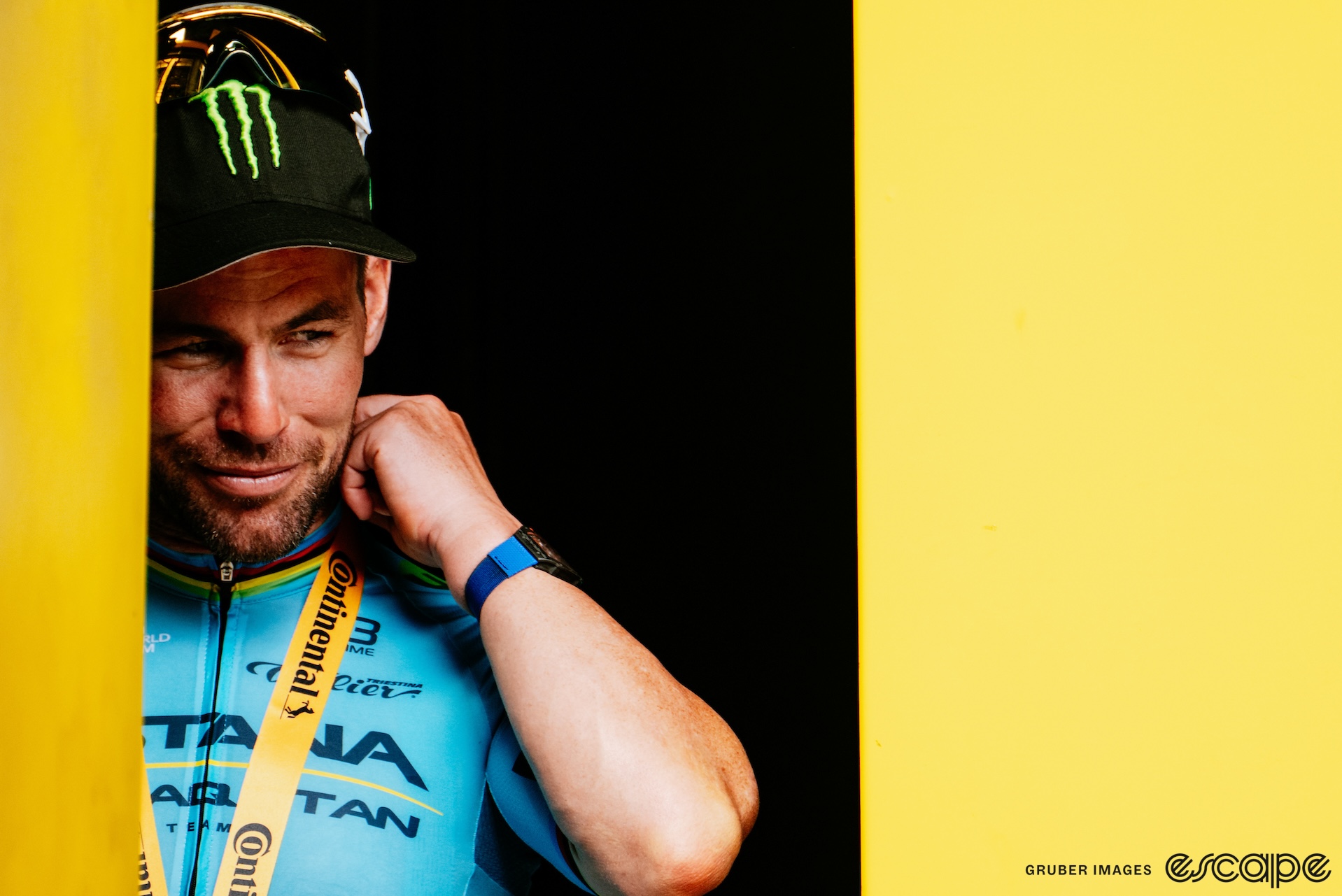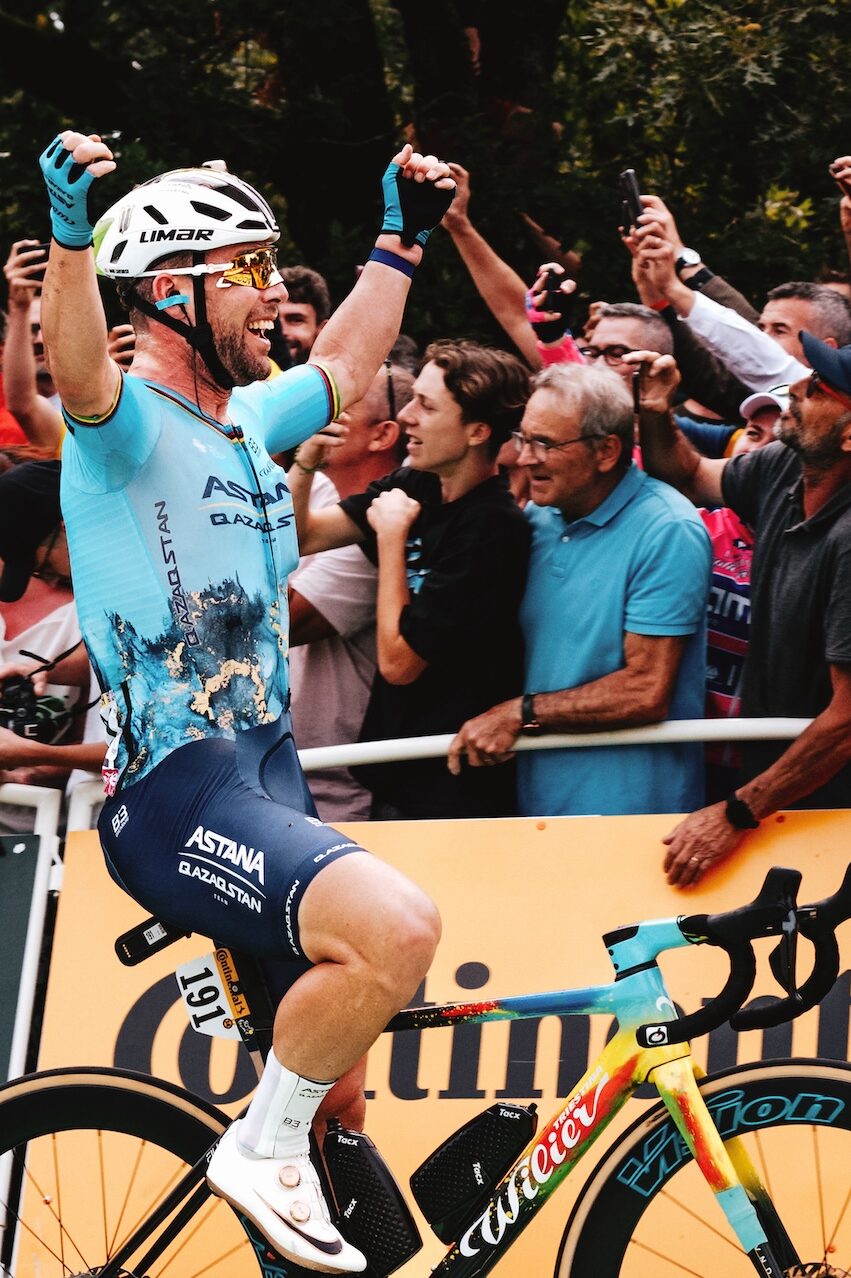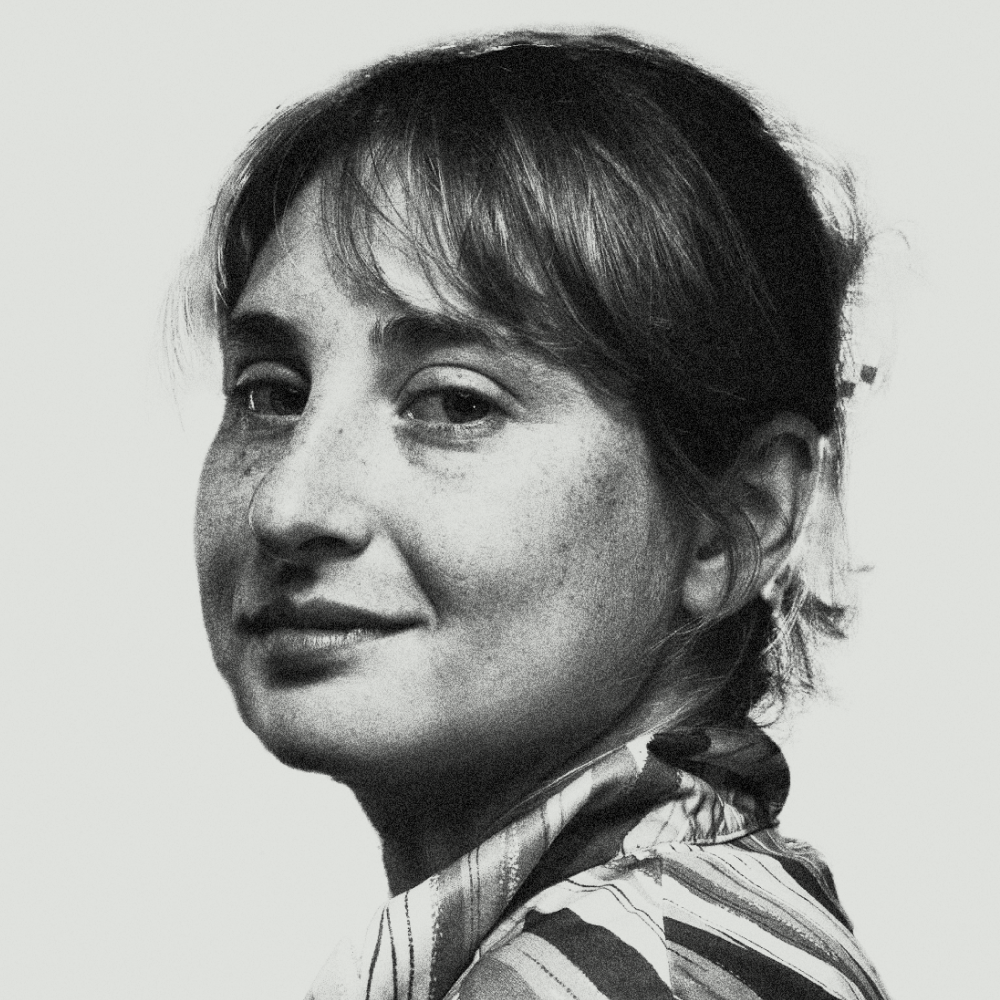Dozens of men packed the road, all of them quivering like particles, suspended in a kind of energy. They moved with such complexity that to watch them required darting from person to person, to the situation as a whole, to a single rider.
Mark Cavendish, despite a rough start to the Tour, was there, among them. It’s impossible, even on replay, to map every number to a rider and every rider to a role and every role to its respective, ever-changing place in the peloton. Commentators have my utmost respect. It’s easiest to just focus on the motion. In the final 2 km, Lotto Dstny came out to the front, then Alpecin-Deceuninck moved up to meet them, Mathieu van der Poel among the ranks. But the sprint carried such momentum that these attempts to control it failed, and instead it became a kind of fringed boundary, a permeable situation someone like Cavendish could, and often does, take advantage of.
Uno-X Mobility, DSM firmenich-PostNL, each tried to lock everything down, but time and time again, it didn’t matter. The deciding move, visible to me only in retrospect, was Cavendish’s last-minute choice to leave Jasper Philipsen’s wheel when Van der Poel was squeezed into the barriers, his lead-out foiled.
Through all of this chaos, Mark Cavendish threaded a very treacherous kind of needle. Because he can thread this needle, the broad space of the finish line opened for him in a way it didn’t and perhaps couldn’t for anyone else. And when he threw his hands up victorious, he did so to the exaltation of the entire world, who had been waiting for years to see him cross this threshold, this threshold from the not-quite to the definite and unassailable best. A million what-ifs were silenced in that single, indelible moment. It was the kind of moment, the kind of victory, after which even the champion’s enemies cheered. The concept of what is possible shifts.
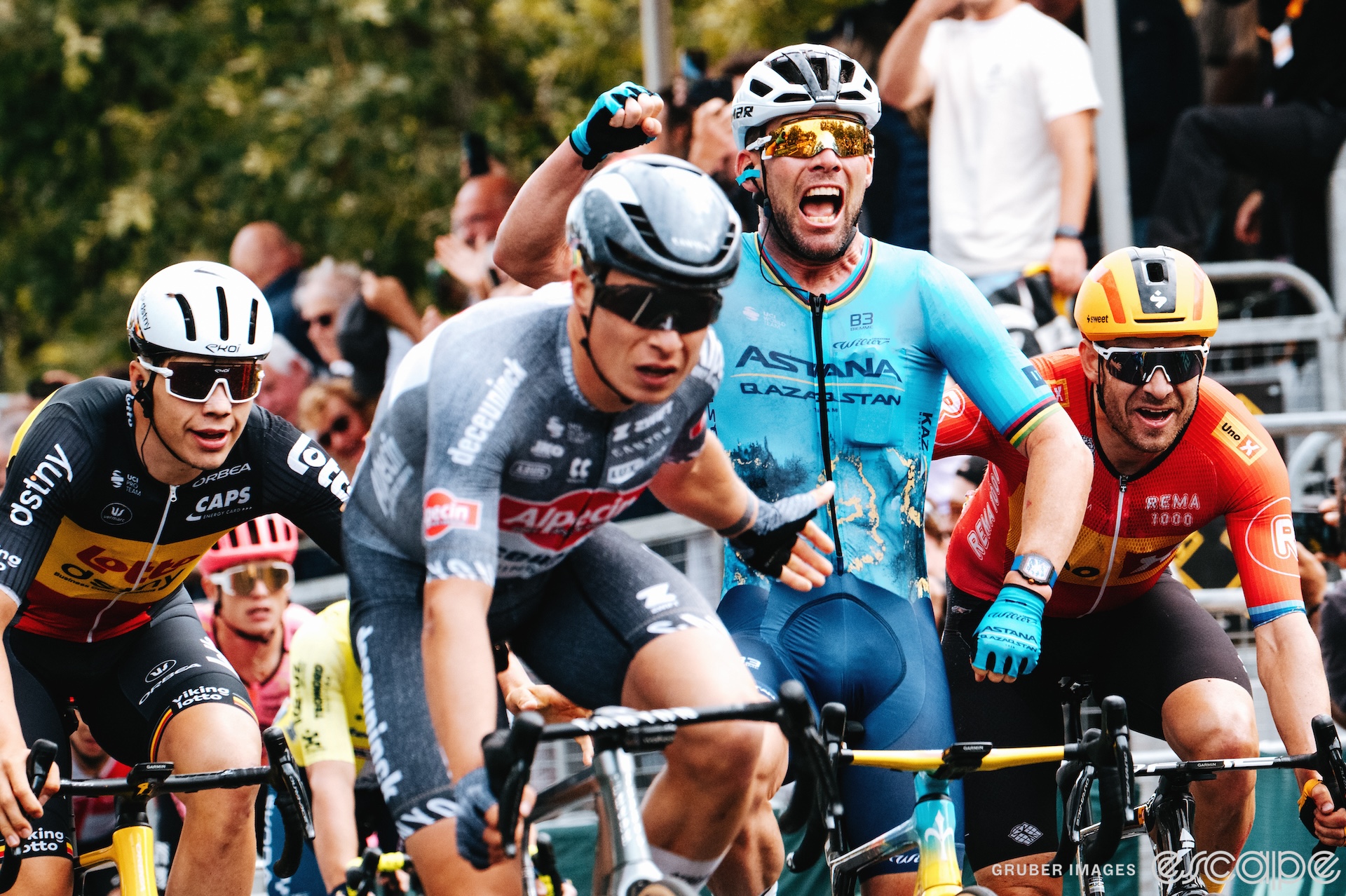
A sprint happens so fast that even from the privilege of helicopter shots and the rewind button, it’s hard to pick out, by way of individual events – a leadout man dropping, a wheel snagged, a corner taken flawlessly – what’s happening. It only becomes a cohesive event when seen all at once, either in the aftermath of victory or in the chaotic processing of real time.
The camera distorts, it curates. We are able to reconstruct the event, to argue efficacy, strategy, by going back and forth, picking out who was on whose wheel, how one rider got into the slipstream of another, where one sprinter lost out the fight for positioning to another; establishing, through each individual snippet of motion a kind of causality that is not present in the live, unfolding moment. This is why, in sports, the replays are shown over and over again after the fact.
In this respect, watching a sprint is like viewing a painting. In Ways of Seeing, the art critic John Berger wrote, “In a painting all its elements are there to be seen simultaneously. The spectator may need time to examine each element of the painting but whenever he reaches a conclusion the simultaneity of the whole painting is there to reverse or qualify his conclusion. The painting maintains its own authority.”
Berger was talking about the changes film wrought on paintings, which perhaps is a bad example to use when talking about a filmed event, but I bring up Ways of Seeing because I want to talk about seeing as a way of understanding why, exactly, Mark Cavendish is not only the greatest sprinter of all time but also why he’s just won his 35th Tour de France stage, making him, to the gleeful astonishment of the entire world, the sole record holder in number of Tour de France stage victories. It’s a record the inimitable Eddy Merckx held solo for 46 years and shared, for the last three, with Cavendish. Every time an old master is dethroned it marks both a respect for the past and a celebration of the relevancy and endurance of the now.
Berger wrote that the convention of perspective, “first established in the early Renaissance, centers everything on the eye of the beholder … Perspective makes the single eye the center of the visible world.” The invention of the camera creates contradictions in perspective, which fractured modern art at the turn of the century. When we watch cycling on television, it’s no different. We view events in a distorted, albeit relatively conventional and frequently changing, perspective. Film and event are still separate.
What is unique about sprinters specifically is that they see neither themselves nor their situation the same as we view them. By the time they map out the world in an orderly way in which moving objects appear on a distant horizon, by the time they use this visual input to think about potential mobility on that plane, it would be too late for them to execute decisions.
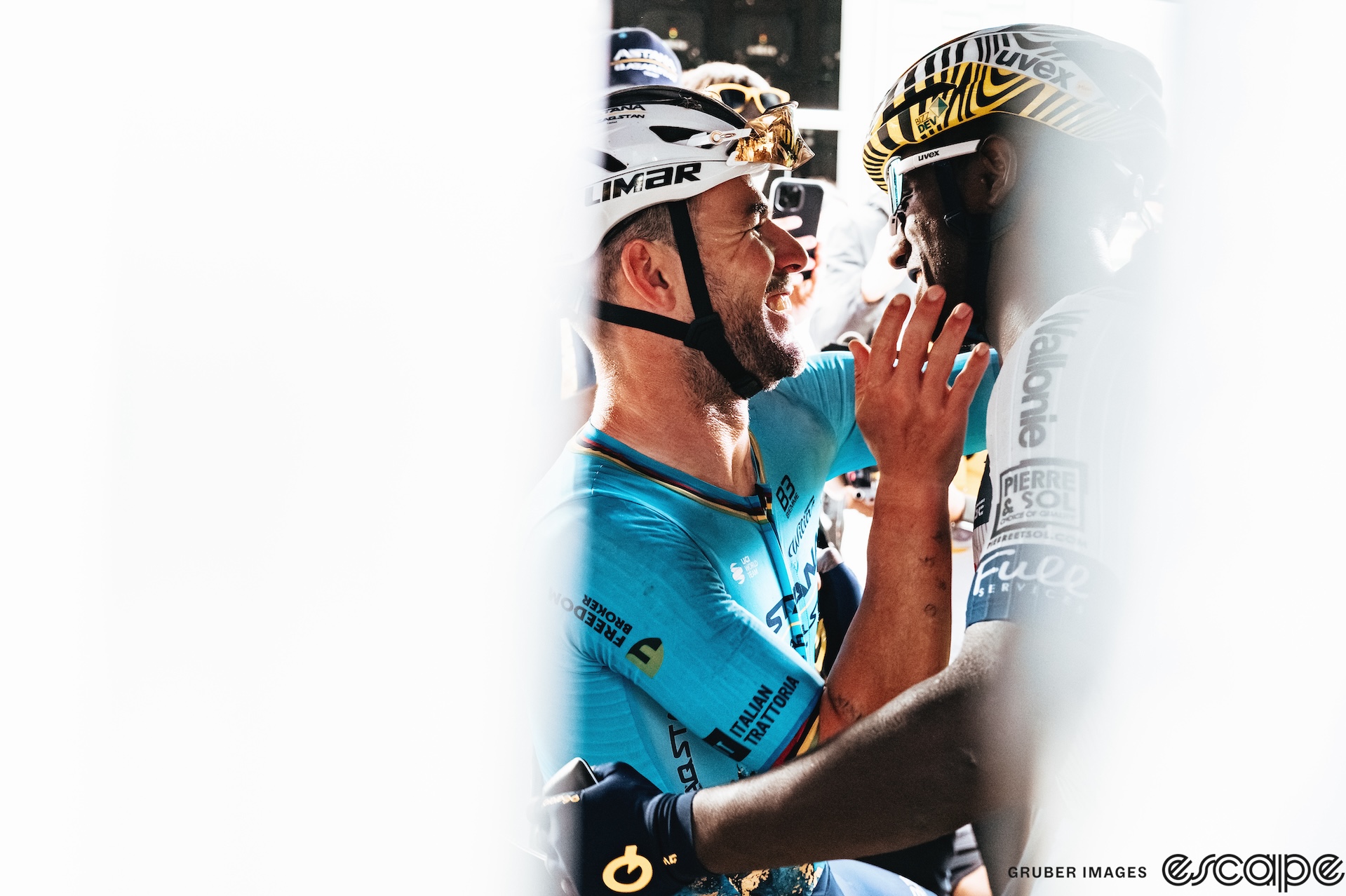
Mark Cavendish does not see in perspective. He sees in a secret way, a combination of bodily instinct, relative motion, and eye. He sees without seeing. Perhaps that’s why they call him the “Manx Missile” – his way of feeling a path through these tricky situations is not dependent on the kind of analysis we use to understand what he does. He is not out there seeing the sprint from above or from the front, all at once, cannot make the same cohesive sense we automatically assume athletes can make, a bias that’s brought to us by television. In a landscape of constant motion, deadly potential, and compressed time, like a missile, he seeks.
What makes Cavendish’s decisive move brilliant is that it wasn’t, on paper, from our perspective, the “logical” one. I think if most of us were in Cavendish’s position, Philiipsen’s and Van der Poel’s would be the obvious wheels to take simply because that pair is very, very often a winning combination. But Cavendish relied not on convention, but on instinct. That instinct is of course informed by decades of experience, and is backed up by an absolute control over body and machine, but it still transpires across the timespan of an impulse, an instant. This split-second decision making that takes place not in the mind and then the body, but in the body along with the mind is so amazing, so inconceivable to someone like me who will never be in such a dangerous, high-pressure situation, that I consider it one of the great, mystical miracles of the human form.
The more I watch the sprint over and over again, the more I consider it not only surgical but perfect. A million potentialities that converged in just the right way, most of which Cavendish had no control over but one of which he did: himself.
When he crossed the line, I got the feeling that the whole thing had ended so abruptly and with such surprise. The finish line snuck up on me. The thought of just how momentous the moment was, not just for Cavendish, but for cycling history, arrived late, as though an echo.
And after that moment, the other thoughts came rolling in, Cavendish suffering in low-stakes races, Cavendish being berated by his old boss Patrick Lefevre, Cavendish sick with mono, trading in one team’s kit for another seemingly season after season, the doubt that surrounded him, the weight of years, the almost embarrassed impatience towards his attempts, the questions of “why is he still doing this?” Cavendish himself, because he is intelligent and clever and surprising, ensured that while there were many who lost hope, there existed just as many if not more who held that hope close to their chests where it bonded with the hope in their own lives.
It is hard to silence doubt. Our own doubts, but also the doubts of others which lie beyond our control. All we can do is try, but with an absence of faith, trying is almost impossible. The lesson of Mark Cavendish is that the only direction of time is forward and the only path we can take in that direction is by way of patience. Seeing distorts, the perspective of others distorts. Seek, and all will come.
Did we do a good job with this story?
